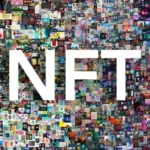Blockchain technology has transformed how we think about data security, transparency, and decentralization. From cryptocurrencies to supply chain management, blockchain is becoming integral across industries. If you’re ready to dive into blockchain development, setting up your first blockchain network is an essential step.
This guide will walk you through everything you need to know to set up your first blockchain network — from understanding core concepts to practical implementation and deployment. By the end, you’ll have a solid foundation and the know-how to create a blockchain network tailored to your needs.
What is a Blockchain Network?
A blockchain network is a decentralized digital ledger where transactions are securely recorded across multiple nodes. Each block contains a list of transactions, cryptographically linked to previous blocks, forming an immutable chain.
Core features include:
- Decentralization: No single entity controls the network.
- Transparency: All nodes have access to the ledger.
- Immutability: Once data is written, it cannot be altered.
- Consensus Mechanisms: Rules for validating and agreeing on transactions.
Why Set Up Your Own Blockchain Network?
Many developers or businesses choose to create a private or permissioned blockchain network rather than relying on public blockchains like Bitcoin or Ethereum.
Benefits of your own blockchain:
- Control: Customize network rules and permissions.
- Security: Restrict participation to trusted entities.
- Performance: Faster transaction processing.
- Cost: Avoid high fees on public blockchains.
- Privacy: Data remains confidential among participants.
Key Components of a Blockchain Network
To set up your own blockchain, you need to understand the essential components that form the backbone of the network:
| Component | Description |
|---|---|
| Nodes | Devices/computers participating in the network |
| Ledger | Distributed database recording transactions |
| Consensus Algorithm | Mechanism to achieve agreement across nodes |
| Cryptography | Ensures data integrity and security |
| Smart Contracts | Self-executing contracts with coded business logic |
| Network Protocol | Defines communication between nodes |
Choosing the Right Blockchain Platform
Before setting up, select the platform that best suits your use case. Popular blockchain platforms include:
| Platform | Type | Use Case | Pros | Cons |
|---|---|---|---|---|
| Ethereum | Public/Permissioned | Decentralized apps, ICOs | Large community, smart contracts | Scalability issues, gas fees |
| Hyperledger Fabric | Permissioned | Enterprise applications | Modular, privacy-focused | Complex setup, steep learning curve |
| Corda | Permissioned | Finance and business networks | Designed for privacy | Limited public ecosystem |
| Binance Smart Chain | Public | DeFi and dApps | Low fees, fast transactions | Centralization concerns |
Tip: For beginners, Hyperledger Fabric and Ethereum testnets are good starting points.
Pre-requisites Before Setting Up Your Blockchain
Make sure you have the following in place before you start:
- Technical Skills: Basic knowledge of programming (JavaScript, Go, Solidity, or Java)
- Hardware: Multiple computers or cloud servers to act as nodes
- Software Tools: Platform SDKs, command-line interfaces, and relevant dependencies
- Network Infrastructure: Reliable internet connection and firewall configuration
- Security Measures: SSL certificates, encryption tools, and secure key management
Step-by-Step Guide to Setting Up Your First Blockchain Network

Let’s use Hyperledger Fabric as an example because it’s widely used in enterprises and permissioned networks.
Step 1: Install Dependencies
You need to install the following:
- Docker & Docker Compose
- Node.js and npm
- Hyperledger Fabric binaries and samples
bashCopyEditcurl -sSL https://bit.ly/2ysbOFE | bash -s
Step 2: Set Up the Network Configuration
Create configuration files defining your network’s nodes, organizations, and policies. This includes:
configtx.yaml— Defines the network’s channel configuration.crypto-config.yaml— Manages cryptographic material for identities.
Step 3: Generate Cryptographic Material
Use the cryptogen tool to generate certificates and keys for your network’s organizations and nodes.
bashCopyEditcryptogen generate --config=./crypto-config.yaml
Step 4: Create the Channel
Channels are private sub-networks where specific participants transact confidentially.
bashCopyEditconfigtxgen -profile TwoOrgsChannel -outputCreateChannelTx ./channel.tx -channelID mychannel
Step 5: Start the Network
Use Docker Compose to spin up the nodes, peers, and ordering services.
bashCopyEditdocker-compose -f docker-compose.yaml up -d
Step 6: Join Peers to the Channel
Each peer must join the channel.
bashCopyEditpeer channel join -b mychannel.block
Step 7: Deploy Chaincode (Smart Contracts)
Install and instantiate chaincode on peers to define business logic.
bashCopyEditpeer chaincode install -n mycc -v 1.0 -p github.com/chaincode/chaincode_example02/go/
peer chaincode instantiate -o orderer.example.com:7050 -C mychannel -n mycc -v 1.0 -c '{"Args":["init","a","100","b","200"]}'
Step 8: Interact with the Network
Invoke transactions or query the ledger through the CLI or SDK.
bashCopyEditpeer chaincode invoke -o orderer.example.com:7050 -C mychannel -n mycc -c '{"Args":["invoke","a","b","10"]}'
peer chaincode query -C mychannel -n mycc -c '{"Args":["query","a"]}'
Network Maintenance and Governance
Once your network is live, ongoing maintenance and governance are crucial:
- Monitor Node Health: Use tools like Prometheus and Grafana.
- Update Chaincode: Regularly upgrade smart contracts.
- Manage Identities: Add or revoke participant access.
- Audit Logs: Track all transactions and network activity.
- Backup: Regularly backup ledger data and configurations.
Common Challenges and How to Overcome Them
| Challenge | Description | Solution |
|---|---|---|
| Network Latency | Delay in transaction processing | Optimize consensus protocol and network setup |
| Scalability Issues | Slowdown with more nodes | Use layer 2 scaling, sharding, or sidechains |
| Security Vulnerabilities | Potential attacks like 51% or Sybil attacks | Implement strong identity management, audits |
| Complexity of Setup | Configuration errors and dependencies | Follow best practices and use automation tools |
| Interoperability | Difficulties connecting with other blockchains | Use blockchain bridges and standards |
Advanced Features to Consider

After mastering the basics, explore these features to enhance your blockchain network:
- Private Data Collections: Keep sensitive data confidential within subsets of the network.
- Multi-Channel Networks: Separate channels for different business processes.
- Consensus Mechanism Customization: Choose between Proof of Authority, Practical Byzantine Fault Tolerance, or others.
- Integration with Oracles: Connect blockchain with external real-world data.
- Tokenization: Create and manage tokens for incentives or asset representation.
- Automated Smart Contract Testing: Use frameworks like Truffle or Hyperledger Caliper.
Bonus: Comparison Table of Popular Blockchain Consensus Algorithms
| Consensus Algorithm | Description | Pros | Cons | Use Cases |
|---|---|---|---|---|
| Proof of Work (PoW) | Miners solve complex puzzles | Secure, well-tested | Energy-intensive, slow | Bitcoin, Ethereum (pre-2.0) |
| Proof of Stake (PoS) | Validators stake tokens | Energy-efficient, fast | Risk of centralization | Ethereum 2.0, Cardano |
| Practical Byzantine Fault Tolerance (PBFT) | Fault-tolerant consensus | High throughput, low latency | Complex, suitable for permissioned networks | Hyperledger Fabric |
| Proof of Authority (PoA) | Trusted validators | Fast, efficient | Requires trust in validators | Private/permissioned chains |
ALSO READ: How to Get Started with Crypto Trading for Beginners?
Conclusion
Setting up your first blockchain network may seem daunting at first, but breaking it down into manageable steps makes it achievable. Understanding blockchain fundamentals, choosing the right platform, and carefully configuring your network lays the foundation for a secure and efficient decentralized system.
Whether you’re developing enterprise solutions, experimenting with decentralized apps, or launching blockchain projects, your first network setup is a crucial milestone. Continue learning about consensus algorithms, smart contract development, and security best practices to expand your blockchain expertise.







